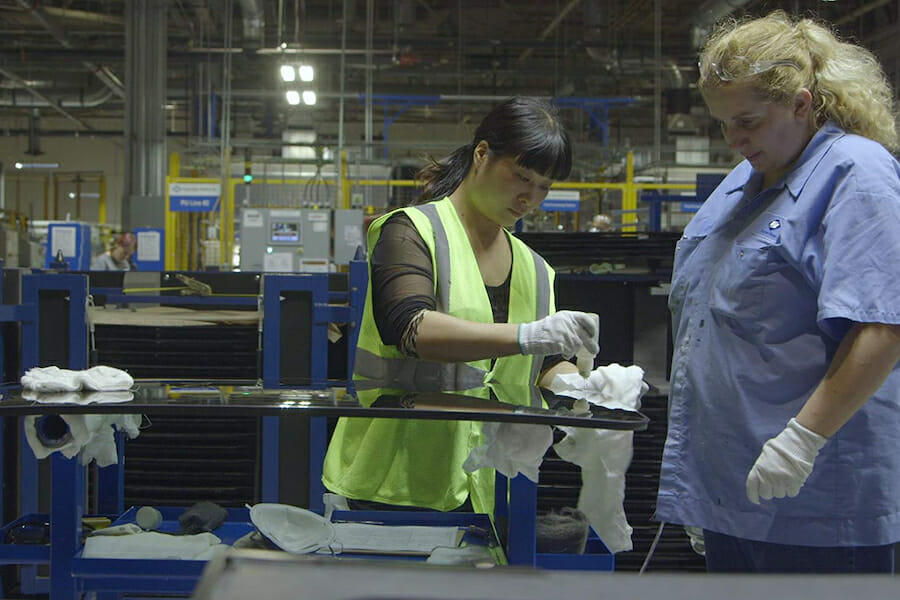
‘American Factory’ Review
In December 2008, General Motors shut down their truck plant in Dayton, Ohio, laying off 2,000 employees. Six years later, Chairman Cao Dewang, the founder of Fuyao Glass, invested millions to turn the plant into his first U.S. operation– a company that he claims owns 70% of the auto glass market. In doing so, the factory hired approximately 1,000 locals, many of whom had been unemployed since the GM plant closed years prior.
Co-directors Steven Bognar and Julie Reichert share an Oscar nomination (she has 3 total) for their 2009 documentary short, “The Last Truck: Closing of a GM Plant.” Here in “American Factory,” incidentally also Barack Obamas’ debut Netflix documentary, they give us impressive access to a remarkable situation: a successful Chinese company opening a factory in the United States, and attempting to merge two distinctly different cultures. We hear much these days about globalization, and by the end of the film, you’ll likely be re-defining the word.
This unique business model came with good intentions on both sides. The differences that start out as kind of funny and well-intentioned turn into hurdles that are nearly impossible to manage. Fuyao ships many workers from China to Dayton for the training of U.S. workers. These ‘temporary’ transplants must spend two years away from their family as they try to make sense of an unfamiliar land far different from home. Workshops are held for the Chinese workers as they are lectured on what makes Americans different…they don’t work as hard, they don’t dress well, they talk too much on the job, they won’t work overtime, etc. The Chinese blatantly state that they are superior to American workers – a point that’s difficult to argue against when it comes to dedication, quality, and efficiency. We soon learn there is more to the picture.
U.S. labor and safety laws exist for a reason, and the Chinese company neither understands these nor is very willing to abide by them. Additionally, since this is the ‘Rust Belt,’ the shadow of unionization hovers from day one. While China’s Workers’ Union functions in sync with companies, U.S. labor unions are regularly in conflict with companies here. When the U.S. supervisors take an observation trip to China to see the Fuyao factory, the differences become even more obvious. The mostly overweight Americans show up casually – one even in a Jaws t-shirt – while the lean and fit Chinese are all in fine suits and ties. Morning shift routines are also contrasted to point out the gaps in discipline and attention to details.
What the filmmakers do best is allow us to see both sides of the issue. Surely, the right thing to do is obvious when it comes to safety, and when Chairman Cao says the real purpose in life is one’s work, well, we realize these two cultures are farther apart than the 7,000 miles that separate them. It’s a fair look at both sides, but for those who say U.S. companies are too focused on profit, they’ll likely be surprised to learn that Chinese factory workers typically get 1 or 2 days off from work each month! As one of the dismissed American managers states, you can’t spell Fuyao without “F.U.” The film seems to present a debate with lines drawn via citizenship and culture, and the contrast might be more relevant today than ever before.

